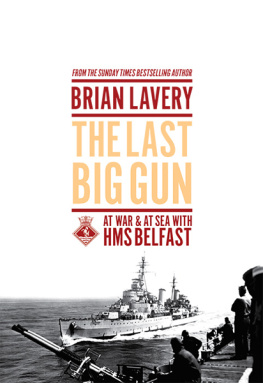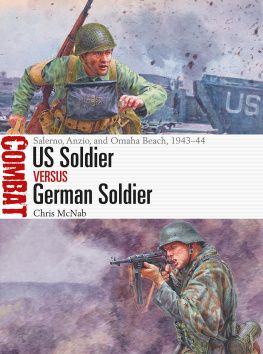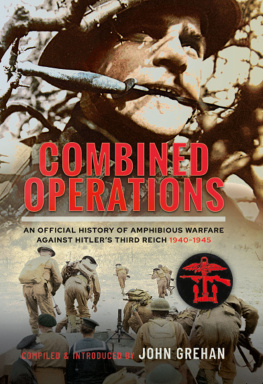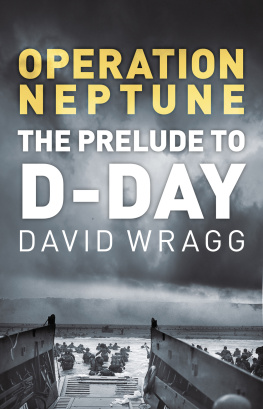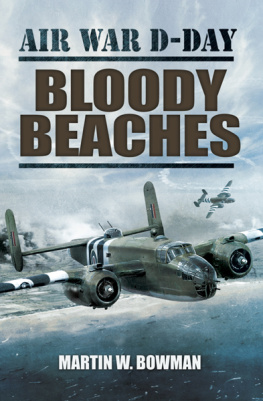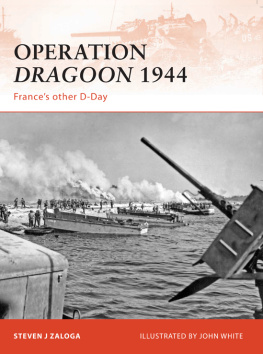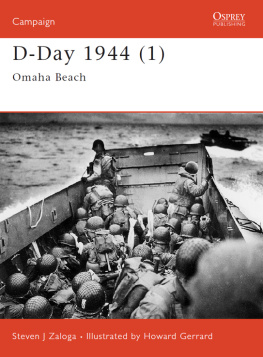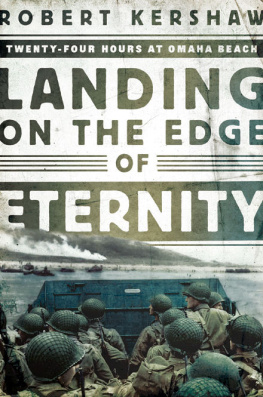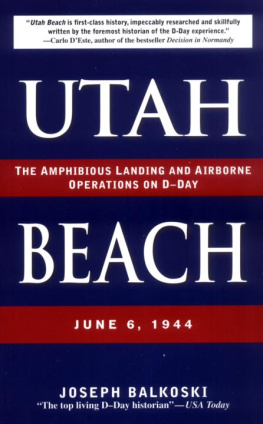Copyright Brian Lavery 2009
First published in Great Britain in 2009 by
Seaforth Publishing,
Pen & Sword Books Ltd,
47 Church Street,
Barnsley S70 2AS
www.seaforthpublishing.com
British Library Cataloguing in Publication Data
A catalogue record for this book is available from the British Library
ISBN 978 1 84832 050 5
All rights reserved. No part of this publication may be reproduced or
transmitted in any form or by any means, electronic or mechanical,
including photocopying, recording, or any information storage and retrieval
system, without prior permission in writing of both the copyright owner
and the above publisher.
The right of Brian Lavery to be identified as the author of this work has
been asserted by him in accordance with the Copyright, Designs and
Patents Act 1988.
Designed by Martin Hendry
Illustrations by Peter Wilkinson
Printed and bound in Great Britain by Cromwell Press Group, Trowbridge
PREVIOUS PAGES
Troops landing on the Normandy beaches from an LCA, among much larger landing craft.
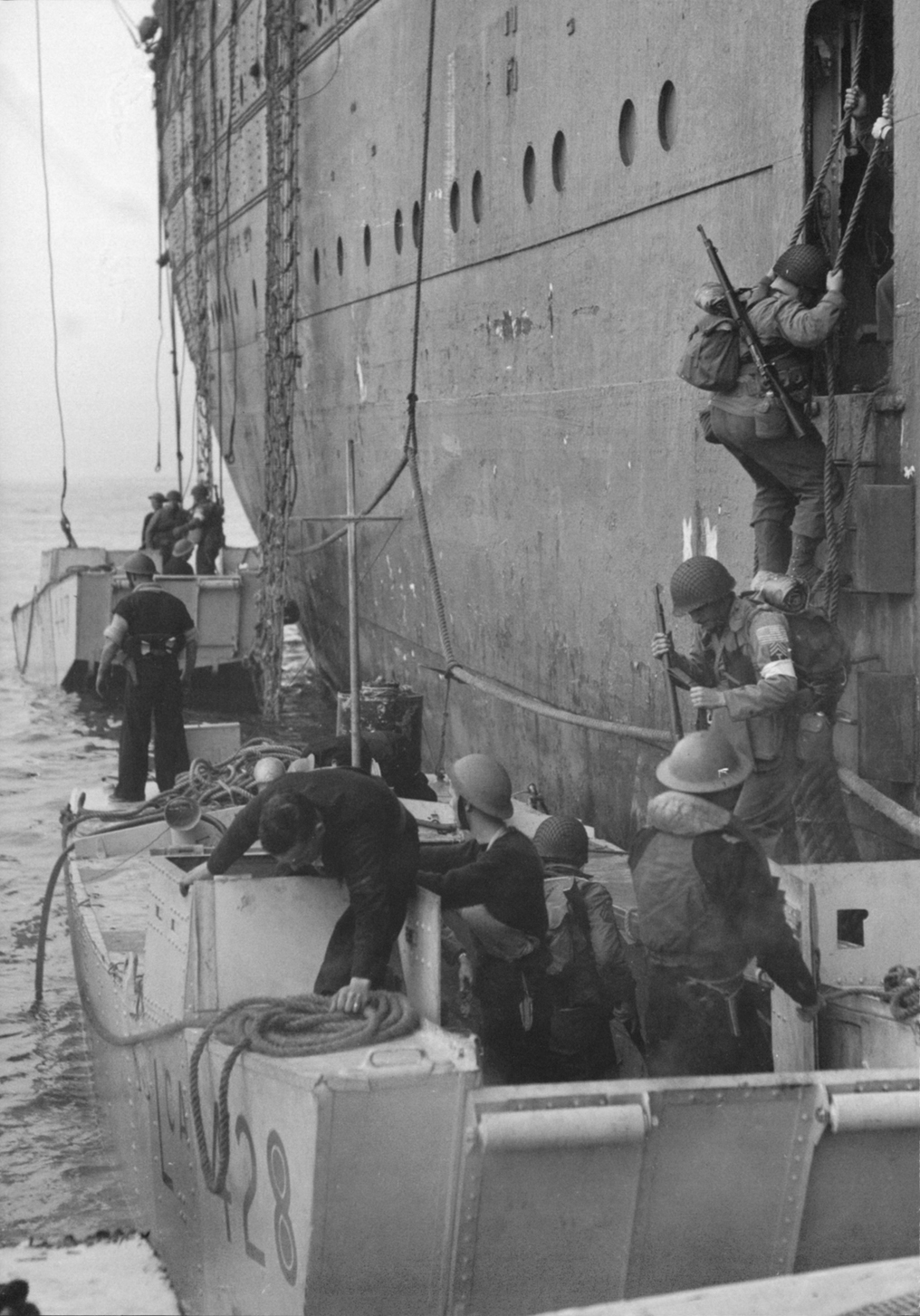
American troops embarking into an LCA from a liner during the North Africa landings.
T HE Assault Landing Craft, or ALC, later known as the Landing Craft Assault (LCA), was the only serviceable British landing craft in the early stages of the Second World War. It had its first experience of combat, rather bizarrely, while landing the French Foreign Legion in Norway in 1940, and showed great promise during the evacuations from Dunkirk and Crete. It took part in many commando raids and landed the first British and Commonwealth troops in North Africa, Sicily and Italy. It was a tried and tested design by the time of the Normandy invasion, when it became the unsung hero. Boats commanded by leading hands or able seamen picked their way through beach obstacles to land the first waves of infantry, while more imaginative types of vessel such as the swimming tank, the Landing Craft (Rocket) and the Landing Craft Tank (Armoured) proved far less successful. It was still in service for the Suez operations in 1956.
The assault landing craft was the humblest vessel in the wartime Royal Navy during the Second World War. It was commanded by a rating rather than an officer, it did not appear in the Navy List, it had no armament of its own and it had a number rather than a name. It had no accommodation for cooking or sleeping so it was not expected to be used independently. It might be regarded as equivalent to a ships boat, except that it was usually organised in flotillas and it was a true fighting vessel, not a support craft. It was certainly not pretty, in an age when the world had not yet become familiar with box-like vessels. Even in its role in amphibious operations, it tended to be dwarfed both literally and figuratively by larger vessels that could put tanks ashore with a certain amount of dramatic effect.
Nearly 2000 were built and these were a vital link in allied wartime operations. If each landed its full complement of thirty-five men only once, that would make a total of nearly 70,000. But if the average craft carried out four or five landings in action conditions, then they would have landed around 300,000, perhaps even more, and it is quite possible that half a million soldiers had the experience of the short but uncomfortable and dangerous voyage onto a beach held by the enemy.
INCEPTION
AND DESIGN
EARLY LANDING CRAFT
Most British wars, ever since the Norman Conquest, have involved some sort of combined operations between land and sea forces, such as in the countless colonial expeditions during the wars between Britain and France from 1689 to 1815. They were rarely opposed strongly on the beaches, but a notable exception was at the landing in Egypt in 1801. They mostly employed ordinary boats launched from ships, with the occasional use of specially designed flat-bottomed landing craft, such as the forty-nine wooden horse-boats that amused holidaymakers during army exercises at Clacton in 1904. They had ramps in the bows but they were to a thirty-year old design the best that was available. It was not considered possible to invade in the teeth of strong opposition, so it was assumed that the landing would be unopposed. The 191418 war produced only the Gallipoli landings, which were disastrous due to faulty doctrine and inadequate equipment. This tended to reinforce the growing view that such operations were impossible against modern weaponry. The enemy could defend long stretches of beach with machine guns and long-range artillery, while aircraft could detect any landing early and break it up on the way over. Moreover, an army would now have to arrive with supporting tanks and other vehicles, and the fuel to sustain them. Nothing was done to develop landing craft in Britain during the 1920s, except to produce the first Motor Landing Craft (MLC), which was a poorly designed vessel:
With the wind in the right direction they would do five knots, the jet-propelling [i.e., water jet] engine was a bit temperamental and much preferred a short journey to a long one, it would carry a 6-inch gun without its mountings, and a row of mules or ten tons of stores. Short wheel-based vehicles found it impossible to get out over the bow because of the acute angle of the ramp with the deck, but that did not matter as the craft drew four feet six inches of water and vehicles in those days were not designed to land in any depth of water. From the personnel-carrying point of view it had no armour and was so noisy that no tactical surprise could be hoped for if the beach was manned by the enemy. She weighed twenty tons, and, because of her egg-like undercarriage, was not really at home on the flat deck of a merchant ship.
THE WORK OF THE ISTDC
Prospects of war with Germany grew when the Nazis came to power in 1933, but that did not seem to create much demand for amphibious operations with France as an ally. Italian expansionism did, however, cause fears of a war in the Mediterranean, while Japan used its own landing vessels to invade China. In September 1938, the Inter-Service Training and Development Centre (ISTDC) was set up with headquarters at Fort Cumberland in Portsmouth. It consisted of one officer from each of the services, with a Royal Marines captain as adjutant. Captain L E H Maund of the Royal Navy had already helped draw up the official manual of combined operations and was to be its chairman. The ISTDC was to be responsible for the study and development of material, technique and tactics necessary for the success of opposed landings. Later, this was amended so that it did not just include opposed landings. In December 1938, its detailed aims included provision of material for training. A special landing craft carrier was not considered essential yet, although One self-propelled landing craft should be constructed for experimental purposes and a report made on the results of the trials before further construction was ordered.The provision ot support landing craft was held in abeyance but trials were to be made on the use of 2in mortars in other craft. There were to be experiments in the use of infrared rays to guide craft onto beaches, with naval gunfire support for landings, the use of piers and pontoons to help the discharge of stores, and the landing of troops from aircraft, so that both Mulberry harbours and paratroopers were considered at this early date.
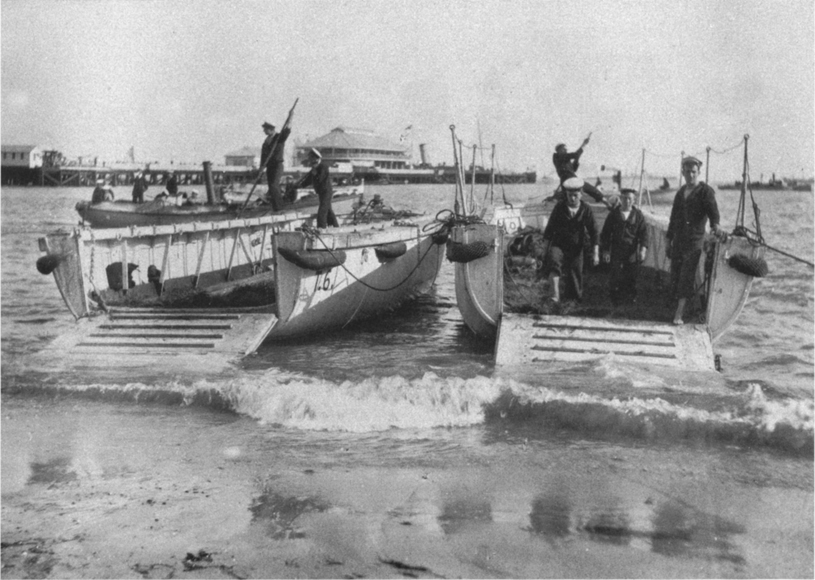
A horse beat, an ancestor of the LCA, as used in exercises at Clacton in 1904




